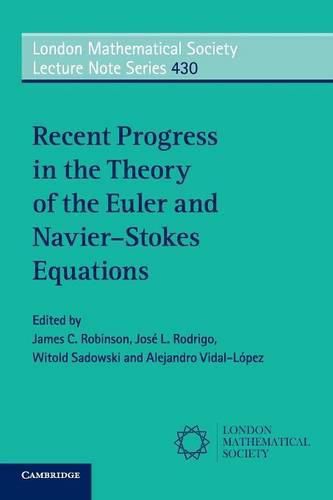Readings Newsletter
Become a Readings Member to make your shopping experience even easier.
Sign in or sign up for free!
You’re not far away from qualifying for FREE standard shipping within Australia
You’ve qualified for FREE standard shipping within Australia
The cart is loading…






The rigorous mathematical theory of the Navier-Stokes and Euler equations has been a focus of intense activity in recent years. This volume, the product of a workshop in Venice in 2013, consolidates, surveys and further advances the study of these canonical equations. It consists of a number of reviews and a selection of more traditional research articles on topics that include classical solutions to the 2D Euler equation, modal dependency for the 3D Navier-Stokes equation, zero viscosity Boussinesq equations, global regularity and finite-time singularities, well-posedness for the diffusive Burgers equations, and probabilistic aspects of the Navier-Stokes equation. The result is an accessible summary of a wide range of active research topics written by leaders in their field, together with some exciting new results. The book serves both as a helpful overview for graduate students new to the area and as a useful resource for more established researchers.
$9.00 standard shipping within Australia
FREE standard shipping within Australia for orders over $100.00
Express & International shipping calculated at checkout
The rigorous mathematical theory of the Navier-Stokes and Euler equations has been a focus of intense activity in recent years. This volume, the product of a workshop in Venice in 2013, consolidates, surveys and further advances the study of these canonical equations. It consists of a number of reviews and a selection of more traditional research articles on topics that include classical solutions to the 2D Euler equation, modal dependency for the 3D Navier-Stokes equation, zero viscosity Boussinesq equations, global regularity and finite-time singularities, well-posedness for the diffusive Burgers equations, and probabilistic aspects of the Navier-Stokes equation. The result is an accessible summary of a wide range of active research topics written by leaders in their field, together with some exciting new results. The book serves both as a helpful overview for graduate students new to the area and as a useful resource for more established researchers.